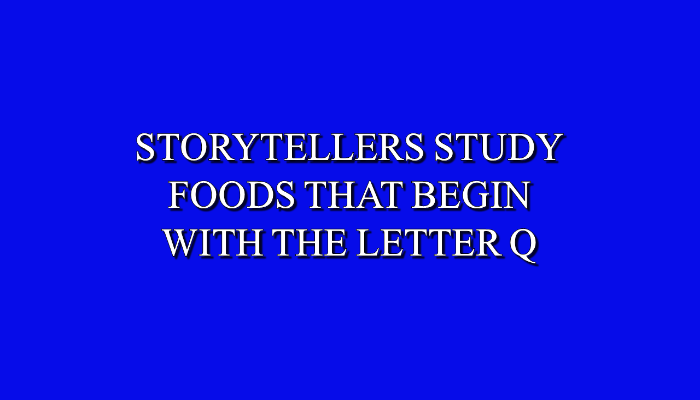
In the movie White Men Can’t Jump, Rosie Perez plays a woman obsessed with becoming a contestant on the game show, Jeopardy. Writer/director Ron Shelton builds upon this throughline (StoryHow PitchDeck card #40) by creating scenes that show her studying an array of unlikely trivia topics including foods that begin with the letter Q.
Writers use foreshadowing (StoryHow PitchDeck card #58) to place seemingly innocuous facts into a listener’s mind early with the goal of retrieving them later. If done well, the value of those facts balloon from inconsequential to indispensable, as it did when Rosie’s character not only landed a spot on Jeopardy but much to her and the audience’s delight, also drew the category foods that begin with the letter Q.
It’s all in the storytelling. Had she not wanted to be on Jeopardy (throughline) or studied Q-foods (foreshadowing), the scene wouldn’t work. But, because Shelton combined both storytelling techniques so brilliantly, the scene is funny and memorable. If you said, “I’ll take foods that begin with the letter Q, Alex,” at a dinner party, I guarantee that you’ll evoke a few smiles–an amazing feat considering that the movie came out twenty-five years ago in 1992.
Much has been written about the relationship between story and our long-term memories. We use mnemonic tricks to remember lists of unrelated things or recall scenes from quarter-century old movies. But, the relationship between story and memory runs much deeper than that. Human memory and story are interdependent. Memories can’t work without stories and stories can’t work without memories.
Master storytellers exercise listeners’ short and long-term memories. They add new facts to old memories to establish familiarity and context. Without the ability to exercise both forms of memory, stories fail.
Consider a dinner scene with four people: a brother, his sister, her son, and his daughter. To make the scene work, the writer banks on:
a) the listener’s preconceptions of family dinners
b) the listener’s ability to remember the relationship between the family members.
But, what if that listener has a faulty short-term memory–one that lasts only a minute. After one minute, the relationship information evaporates, forcing the listener to infer from preconceptions of typical family dinners. Such a deduction will likely result in the incorrect assumption that the two adults are the collective parents of the two children.
Storytellers are memory workers. They place facts into short-term memories while retrieving others from long-term memories. If done well, magic happens. The storyteller creates both a long-term memory and a trigger-phrase to retrieve it–such as foods that begin with the letter Q.
By the way. What exactly is a quince?